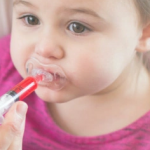The Rate of SIDS drops…but there’s still work to do
 Today the Centers for Disease Control and Prevention released a report announcing that infant mortality rates have dropped by 15% and the rate of SIDS by 29%. That’s a huge success for those of us working in the field of infant health and survival.
Today the Centers for Disease Control and Prevention released a report announcing that infant mortality rates have dropped by 15% and the rate of SIDS by 29%. That’s a huge success for those of us working in the field of infant health and survival.
While this should be celebrated, there’s still a great deal of work to be done. Even with this dramatic decline, the United States maintains one of the highest rates of infant death among developed countries. Additionally, the disparity in infant mortality rates among non-Hispanic blacks versus non-Hispanic whites is nearly double.
Clearly more work still needs to be done. Education programs about SIDS risk reduction measures including the recently updated Safe Sleep Guidelines developed by the American Academy of Pediatrics are helping to bring down the rate of SIDS. In 2016 CJ First Candle conducted outreach initiatives to daycare care providers, nurses and military personnel to offer products and information on safe sleep.
Whether you are a new parent or know someone who is, please share these life-saving tips:
- Infants should share a bedroom with parents, but not the same sleeping surface, preferably until the baby turns 1 but at least for the first six months. Room-sharing decreases the risk of SIDS as much as 50 percent.
- An infant should be placed on his or her back on a firm sleep surface such as a crib or bassinet with a tight-fitting sheet. The crib should be otherwise bare.
- Avoid soft bedding, including crib bumpers, blankets, pillows and soft toys. While infants are at heightened risk for SIDS between the ages of 1 and 4 months, new evidence shows that soft bedding continues to pose hazards for babies at age 4 months and older.
- Breastfeeding is associated with a reduced risk of SIDS. If at all possible, mothers should breastfeed exclusively or feed with expressed milk for at least 6 months.
- Skin-to-skin care is recommended for all mothers and newborns, immediately following birth, for at least an hour, provided that the mother is awake and medically stable.
- Home monitors or commercial devices, including wedges or positioners, marketed to reduce the risk of SIDS should not be used. Similarly, while there are now Consumer Product Safety Commission safety standards for bedside sleepers, and no safety standards for in-bed sleepers, the AAP cannot make a definitive recommendation for or against either product.
- Infants should never be left to sleep on sofas, armchairs or in sitting devices.
In addition to new guidelines, the AAP maintains the following recommendations to reduce the risk of SIDS and suffocation:
- Avoid baby’s exposure to smoke, alcohol and illicit drugs.
- Offer a pacifier at nap time and bed time as soon as breastfeeding is established.
- Give baby supervised, awake tummy time daily to help strengthen neck, arm and shoulders muscles.
Your donation will allow us to close the gap in racial disparity and save babies lives through education and outreach.




